Key Resources encompass people as well as other important assets that are needed in order to execute a business model. As with managing projects, without Key Resources, nothing will happen!
This post provides an overview of the Key Resources block on the business model canvas, provides related considerations for organizational strategy, and outlines the impact on project management.
Overview of Key Resources – Business Model Canvas
 The Key Resources, the 6th block, is located in the left, or execution, section of the business model canvas. It is all about business ‘assets’. It is a precursor to identifying key activities and partners. It represents the assets, or capabilities, that are responsible for implementation to make the business successful. Considerations about Key Resources ultimately drive the cost structure of the business.
The Key Resources, the 6th block, is located in the left, or execution, section of the business model canvas. It is all about business ‘assets’. It is a precursor to identifying key activities and partners. It represents the assets, or capabilities, that are responsible for implementation to make the business successful. Considerations about Key Resources ultimately drive the cost structure of the business.
The Business Model Framework is largely credited to Alexander Osterwalder and Strategyzer. To supercharge your understanding of business models, I recommend his book, “Business Model Generation: A Handbook for Visionaries, Game Changers, and Challengers”.
There are four general types of Key Resources that may be needed:
- Financial – Equity, debt, and line of credit financing required in order to support such things as customer financing, inventory, facilities, research and development, and required licenses.
- Physical (tangible) – This includes facilities for manufacturing, assembly, distribution, and warehousing; brick and mortar storefront(s); laboratory space; vehicles for transportation, service, and delivery; machines for specialized processing; point of sale equipment; and computers (personal and servers).
- Intellectual (intangible) – Some intellectual resources relate to customers, such as branding and customer lists. Other intellectual assets includes proprietary knowledge and databases, as well as legal instruments such as patents, trademarks, copyrights, and trade secrets. These can also include software systems, such as for customer relationship management (CRM), resource management systems, financial software, etc.
- Human – Skilled people can include scientists, engineers, software developers, support specialists, sales, operations, and project managers.
No two organizations are exactly alike. The Key Resources block of the business model canvas provides an opportunity to identify the unique combination of that contributes to the business’s value chain advantage.
Approaches to Determining Key Resources in the Business Model
Start with the end in mind – that Key Resources are needed to drive costs and funding needs.
How can you begin to identify the Key Resources? The first thing is to remember that it will be a work in progress. Your initial list of Key Resources is a hypothesis and will need to be tested continuously as your business model is put into motion and observed in practice.
The following are some ways to approach identification of Key Resources:
- Competitor analysis – It is very effective to consider the Key Resources provided by competitors. You will want to do this for multiple competitors, as they will not all be alike. This will give you baseline ideas as to how to repackage Key Resources in different and unique combinations that add value.
- Brainstorming – The team can provide various ideas from each person’s unique perspective. Be open to new and breakthrough ideas.
- Focus on the value proposition – Use the Value Proposition block of the business model canvas as the driver. Make sure that every Key Resource maps to some aspect of the Value Proposition.
While some structure is good, it is important to take an approach that you are building a ‘hypothesis’ that you will test in practice. Therefore, it is most important to simply get started and then iterate.
Strategy – Ensure the Right Key Resources
The Key Resources block is located at the Execution side of the business model canvas, so the focus in this section is on strategy execution. That entails mapping Key Resources closely to the Value Creation block on the right of the business model canvas, as follows:
- Customer Segments – As the first defining choices made in the business model canvas, the Key Resources need to be capable of serving the target customer segments.
- Value Proposition – At the center of the business model canvas, split equally between value creation and execution, the Key Resources need to be able to deliver on every aspect of the value proposition.
- Channels – Whether it is communication channels or distribution channels, these Key Resources need to be capable of delivering both the messaging and the product or service to customers.
- Customer Relationships – Creating, building, and maintaining customer relationships requires assets, or Key Resources, to provide the ecosystem with the needed functions.
- Revenue Streams – Key Resources are required to ensure that value provided and willingness to pay are in alignment, that each revenue stream is supported, and that customers have the most effective payment mechanisms. The value stick framework can help with this.
In short, the Key Resources need to be aligned with the value creation drivers on the right side of the business model canvas.
—————————————-
I recommend these strategy resources on FlevyPro (paid links):
| Business Model Canvas 140-slide PowerPoint deck and supporting PDF 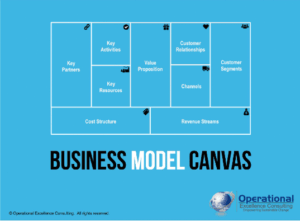 |
| Business Model Canvas 22-slide PowerPoint deck 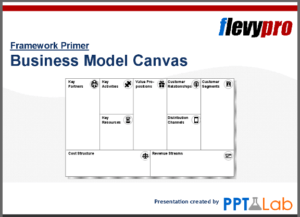 |
| Business Model Canvas: Guide, Process and Tools 43-slide PowerPoint deck 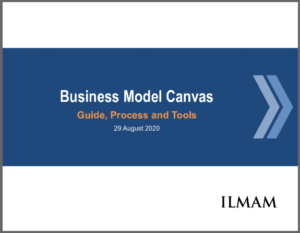 |
| Business Model Canvas – Implementation Toolkit Excel workbook and supporting ZIP 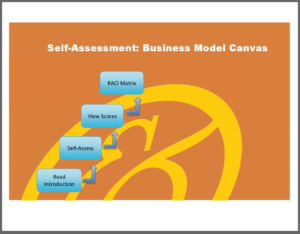 |
—————————————-
Keep in mind that there is plenty of room for business model innovation – for being creative about how Key Resources are approached to create unique value.
Key Resources Drive Project Management
Obviously, project management resources figure in considerations for Key Resources. However, the Key Resources piece of the business model canvas goes beyond that for project managers.
—————————————-
I recommend these PM templates (paid link):

—————————————-
Here are five project management areas that are directly influenced by Key Resources:
- Portfolio Management – Decisions throughout the business model canvas are an input to the projects that need to be done and their priority. Many Key Resources, especially physical (tangible) and intellectual (intangible) will involve projects to create, enhance, and scale the capability.
- Stakeholder Management – The effective management of projects is highly dependent upon having the right stakeholders involved. These stakeholders are Key Resources in the business model, and it is critical up front in the project planning process to determine if these needed Key Resource capabilities exist and are available within the organization.
- Project Human Resources Management – There is a continuing debate about the control of project management resources – centralized or decentralized. “State of Resource Management 2022” by Donna Fitzgerald, ProSymmetry provides a project and people centric viewpoint, generally concluding that centralized control of Key Resources for managing projects is generally more effective. Of course, it depends on the size of organization, industry and organizational maturity, how project-centric the organization is, and other factors.
- Specific Project Management Resources – Other Key Resources for a project may include a Project Management Organization (PMO), DevOps systems (ie. Atlassian, GitLab, etc.), IT infrastructure, supporting systems, communications and collaboration infrastructure, and related capabilities.
- Skills/competency management – A plan with traction for building the target skills and competencies within the organization is a valuable asset to execute projects and sustain value created.

Project success is very dependent upon Key Resources, not only to execute the projects, but to determine the right projects and to support them.
You can quickly and conveniently work through the Key Resources and other components of the Business Model Canvas with the Lucidchart Business Model Canvas template (Try for free) – recommended!
Conclusion and Further Resources
Complete the Key Resources block in the business model canvas in the proper order! Hypothesize about the Value Creation blocks on the right side before proceeding to the Key Resources. Key Resources will provide a driver for the cost structure of the business model.
To supercharge your understanding of business models, I recommend “Business Model Generation: A Handbook for Visionaries, Game Changers, and Challengers” by Alexander Osterwalder.
For a good video overview, see “Business Model Canvas Key Resources” by Steve Morris of StartupSOS:
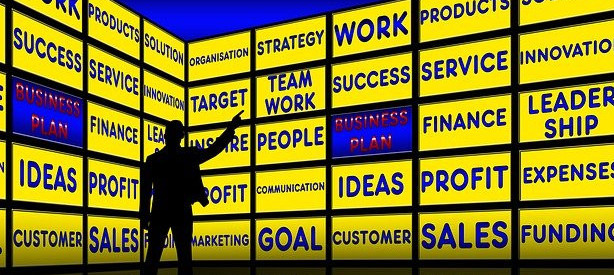
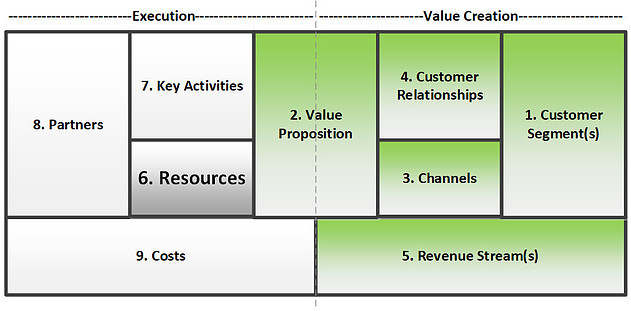

This article provides valuable insights into the Key Resources block of the Business Model Canvas, highlighting its role in strategy execution and project management. A great read for anyone looking to optimize business assets effectively!